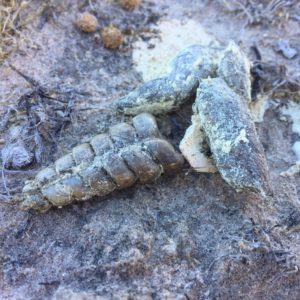While many, on an intellectual level, may be able to understand the crucial role snakes play in a healthy ecosystem, it can still be a challenge to fully appreciate the rattlesnake. As the days warm, rattlesnakes begin to stir from their cold weather hibernation, emerging hungry and ready to breed. When it comes to snakes, if you’re inclined to lump them all into a singular venomous, rattling twist in your mind, consider the ancient proverb, “the enemy of my enemy is my friend,” and meet the Texas indigo snake.
About the Texas indigo snake
“The Texas indigo snake is revered in South Texas, where many ranchers are aware of its propensity for eating predatory rattlesnakes.” – Wild Thing: Indigo Snake is a Black Beauty
Everything is bigger in Texas and the Texas indigo snake is no exception. Typically measuring between 5.5 and 6.5 feet in length (with a record at nearly 8.5 feet long) and weighing 4 to 5 pounds, these reptiles rank among the largest snakes native to the United States. A member of the Colubridae snake family, the Texas indigo is found in the Lone Star state and Mexico and, along with its kin the eastern indigo snake found in southeastern states, is classified as a threatened species and cannot be hunted or killed.
For its habitat, the Texas indigo snake prefers a semi-arid environment with light vegetation, making South Texas favored slithering grounds, but “it can also be found as far north and west as the southern edge of the Edwards Plateau in western Central Texas.” About a month after mating, typically in late winter and early spring, the female snake lays her eggs in an underground den to incubate until hatching. The resourceful snake uses abandoned burrows created by other animals for its den.
Nonvenomous and fairly docile (if you’re not a rattlesnake), the Texas indigo is named for varying shades of blue-black on the rear half of its body. As a diurnal predator, the snake hunts during the day and will eat anything it catches including lizards, frogs, bird, mice, and other snakes, including rattlesnakes.
How Texas indigo snakes kill rattlesnakes
Despite being venomous and up to three to four times heavier than a Texas indigo snake, the rattlesnake’s size and poison can be no match for the indigo’s sheer power and tolerance for rattlesnake venom. Without relying on constriction or venom to conquer its prey, the indigo dominates with its strong jaws, taking the rattlesnake headfirst. For those interested in seeing an indigo in action, you can check out a video, with the cheeky title “Indigo snake gets a rattlesnake lunch to-go,” by clicking here. While out in the field, one of Landmark Wildlife’s biologists captured this photo of indigo snake scat with a rattlesnake rattle in it:
Threatened indigo snakes
Per the Environmental Protection Agency (EPA), “threatened species are plants and animals that are likely to become endangered within the foreseeable future throughout all or a significant portion of its range.” As noted previously, and as indicated on the Texas Parks and Wildlife Department’s “Threatened, Endangered and Protected Animals” page, the Texas indigo snake is classified as threatened. Texas indigo snake populations are threatened primarily due to habitat loss and fragmentation. While this can feel a like an issue beyond your personal control, individual conservation efforts to help protect this nonvenomous rattlesnake killer matter and it can start with a simple reminder. Along with the coral snake rhyme most of us know, “red touches yellow, kills a fellow; red touches black, friend of Jack,” keep this old rancher saying in mind…
“If it’s indigo, let it go.”
Video still at top of page of a Texas indigo snake with its rattlesnake kill. Watch the entire video from Herp.MX, an independent research group dedicated to the study and conservation of Mexico’s herpetofauna with an emphasis on neglected and at-risk species, by clicking here.










